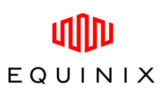Are modular data centers the go-to solution in all circumstances?
The construction of modular data centers meets the need for streamlined operating costs while also improving service levels. However, they are not a universal solution that work in all scenarios. On which criteria should you base your decision?
Modularity: a global trend
The pursuit of greater data center modularity is not a recent trend but it seems to be accelerating, mainly in order to streamline the costs of investment in and operation of new or existing centers. So, as well as the initial investment needed to build a data center, firms are now looking ahead to factor in the inherent costs of operating one. There are several reasons for this. With increasing energy prices, they are fully aware that an oversized data center ultimately means higher costs. At the same time, because of the economic climate, the rapid technological upgrades offered by IT manufacturers and the new solutions marketed by publishers, some companies are less sure how their business will evolve in the future: increases in demand are becoming harder to predict, in terms of both volume and time.
When they don’t decide to outsource the hosting of their information system, on a pay-per-use basis, firms are increasingly coming round to the idea of having data centers that can adapt to their changing needs.
The modular data center: an attractive solution…
There are several solutions that meet this requirement. The first is the concrete data center, designed in modular fashion. Unlike a conventional data center, it is made of a number of separate cells. The whole of the shell, and part of the interior work (particularly the ducts for the various fluids) are completed during construction. Each cell is equipped (power, air-conditioning, cabling, etc.) and put into production as soon as the previous one reaches a certain load rate, with no impact on the cells already operating.
Other than the fact that this design offers better performance at lower energy cost, it is recommended for companies with high security and service level requirements: each cell has enhanced individual protection, and systems can be deployed to ensure redundancy between cells.
Prefabricated modular data centers (often using shipping containers or having insertable partition walls) offer another possible solution. Quick to build, but less secure, they are particularly suited to temporary uses: if you need to move IT facilities off site during works, absorb a sudden rise in demand, perform production levelling or get a product/service to market fast. They are often favoured by telephony operators or certain manufacturers.
… but not a universal one
However, while modularity is an attractive solution in many respects, it is not a suitable one in a number of scenarios. Unless a company has large enough premises or warehouses, it can be hard to fit a prefabricated modular data center, along with its associated technical facilities, into an existing building. Similarly, a company planning to ramp up IT capacity to 80% in less than two years will see no particular advantage in choosing a prefabricated container solution, which is a larger investment. Lastly, security and the level of service need to be taken into account: a company seeking to achieve Tier 3 or 4 cannot legitimately opt for a “light” modular solution, but should instead favour concrete and secure partitioning, while also aiming for an eco-efficient, flexible design.
Conversely, and provided a company has no stringent service level requirements (when Tier 2 is enough), or is not looking to deploy the data center for a long period, it is possible to find a better value solution, whether modular or otherwise.
In conclusion, there is no one-size-fits-all model. First and foremost, a data center has to be aligned with a company’s business constraints and goals in the medium to long term. To make the right choice, the flexibility of the solution and the investment and operating costs are critical criteria. But to neglect expected levels of service and security, and the ramp-up needs specific to each company, would be a mistake.





















